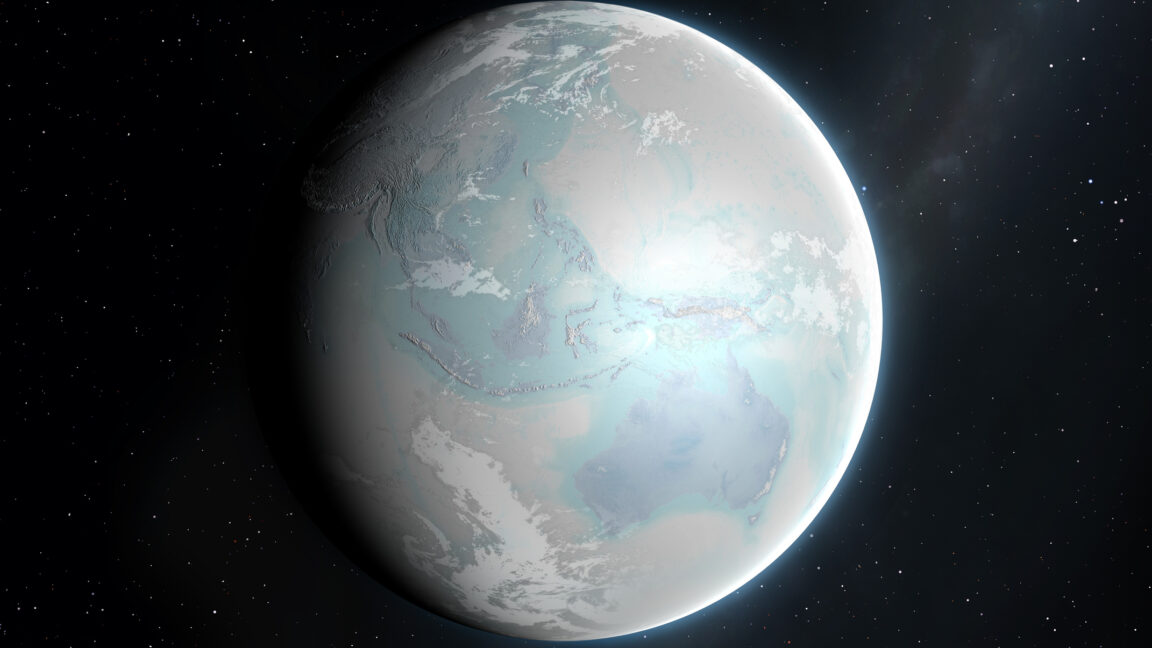Entire continents, even in the tropics, seem to have been under sheets of ice.
By now, it has been firmly established that the Earth went through a series of global glaciations around 600 million to 700 million years ago, shortly before complex animal life exploded in the Cambrian. Climate models have confirmed that, once enough of a dark ocean is covered by reflective ice, it sets off a cooling feedback that turns the entire planet into an icehouse. And we've found glacial material that was deposited off the coasts in the tropics.
We have an extremely incomplete picture of what these snowball periods looked like, and Antarctic terrain provides different models for what an icehouse continent might look like. But now, researchers have found deposits that they argue were formed beneath a massive ice sheet that was being melted from below by volcanic activity. And, although the deposits are currently in Colorado's Front Range, at the time they resided much closer to the equator.
In the icehouse
Glacial deposits can be difficult to identify in deep time. Massive sheets of ice will scour the terrain down to bare rock, leaving behind loosely consolidated bits of rubble that can easily be swept away after the ice is gone. We can spot when that rubble shows up in ocean deposits to confirm there were glaciers along the coast, but rubble can be difficult to find on land.
That has made studying the snowball Earth periods a challenge. We have the offshore deposits to confirm coastal ice, and we have climate models that say the continents should be covered in massive ice sheets, but we have very little direct evidence. Antarctica gives off mixed messages, too. While there are clearly massive ice sheets, there are also dry valleys, where there's barely any precipitation and there's so little moisture in the air that any ice that makes its way into the valleys sublimates away into water vapor.
All of which raises questions about what the snowball Earth might have looked like in the continental interiors. A team of US-based geologists think they've found some glacial deposits in the form of what are called the Tavakaiv sandstones in Colorado. These sandstones are found along the Front Range of the Rockies, including areas just west of Colorado Springs. And, if the authors' interpretations are correct, they formed underneath a massive sheet of glacial ice.
There are lots of ways to form sandstone deposits, and they can be difficult to date because they're aggregates of the remains of much older rocks. But in this case, the Tavakaiv sandstone is interrupted by intrusions of dark colored rock that contains quartz and large amounts of hematite, a form of iron oxide.
These intrusions tell us a remarkable number of things. For one, some process must have exerted enough force to drive material into small faults in the sandstone. Hematite only gets deposited under fairly specific conditions, which tells us a bit more. And, most critically, hematite can trap uranium and the lead it decays into, providing a way of dating when the deposits formed.
Under the snowball
Depending on which site was being sampled, the hematite produced a range of dates, from as recent as 660 million years ago to as old as 700 million years. That means all of them were formed during what's termed the Sturtian glaciation, which ran from 715 million to 660 million years ago. At the time, the core of what is now North America was in the equatorial region. So, the Tavakaiv sandstones can provide a window into what at least one continent experienced during the most severe global glaciation of the Cryogenian Period.
Obviously, a sandstone could be formed from the fine powder that glaciers grind off rock as they flow. The authors argue that the intrusions that led to the hematite are the product of the massive pressure of the ice sheet acting on some liquid water at its base. That, they argue, would be enough to force the water into minor cracks in the deposit, producing the vertical bands of material that interrupt the sandstone.
There are plenty of ways for there to be liquid water at the base of the ice sheet, including local heating due to friction, the draining of surface melts to the base of the glacier (we're seeing a lot of the latter in Greenland at present), or simply hitting the right combination of pressure and temperature. But hematite deposits are typically formed at elevated temperatures (in the area of 220° C), which isn't consistent with either of these processes.
Instead, the researchers argue that the hematite comes from geothermal fluids. There are signs of volcanic activity in Idaho that dates from this same period, and the researchers suggest that there may have been sporadic volcanism in Colorado related to this. This would create fluids warm enough to carry the iron oxides that ended up deposited as hematite in these sandstones.
While this provides some evidence that at least one part of the continental interior was covered in ice during the snowball Earth period, that doesn't necessarily apply to all areas of all continents. As Antarctica indicates, dry valleys and massive ice sheets can coexist in close proximity when the conditions are right. But the discovery does provide a window into a key period in the Earth's history that has otherwise been quite difficult to study.
PNAS, 2024. DOI: 10.1073/pnas.2410759121 (About DOIs).
Hope you enjoyed this news post.
Thank you for appreciating my time and effort posting news every day for many years.
2023: Over 5,800 news posts | 2024 (till end of October): 4,832 news posts
RIP Matrix | Farewell my friend ![]()
- Mutton
-

 1
1



3175x175(CURRENT).thumb.jpg.b05acc060982b36f5891ba728e6d953c.jpg)
Recommended Comments
There are no comments to display.
Join the conversation
You can post now and register later. If you have an account, sign in now to post with your account.
Note: Your post will require moderator approval before it will be visible.